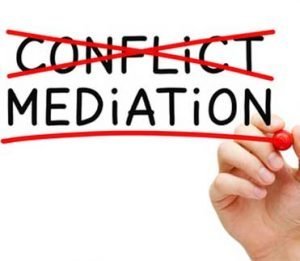What Is a Divorce Mediation?

Divorce mediation is a Process used to try and resolve and settle issues incident to the ending of a marriage. Mediation is a process where people who have a dispute, in this case the manner in which to resolve the issues incident to the ending of their marriage, decide to employ an independent and objective third person to help them to try and reach agreements on all of these issues. In this case, this person would be a Mediator. A Mediator is a person who is trained in the art of helping people who have a dispute reach agreement on how to resolve the same, rather than having the issue determined by a Judge after a formal trial. In regard to a divorce, the Mediator will usually be an attorney who has significant experience in family and domestic relations law. This ensures that this individual will know the issues that the parties will need to consider and agree upon as a consequence of the decision to end their marriage.
Even if the Mediator is an attorney, the Mediator does not represent either the husband or the wife. The job of the Mediator is to help the two spouses come to an agreement on the issues. The Mediation process does not eliminate the potential need of each spouse to have their own attorney. The Mediation process may, or may not, involve each party having his/her own attorney to provide them with legal advice during the Mediation session, or in between meetings between the spouses and the Mediator.
If the parties do reach agreements on the issues, the Mediator will prepare a summary of those agreements, but not the formal written agreements that need to be executed by the parties and filed with the Court. Even if the parties have not previously retained attorneys to represent them, in most cases attorneys will need to be retained after the parties have reached an agreement on the basic issues through Mediation. The attorneys for the parties will then prepare the necessary formal written Agreements to be signed by the parties, which Agreements will ultimately be filed with the Court and included in the formal Order of the Court ending the parties’ marriage.
